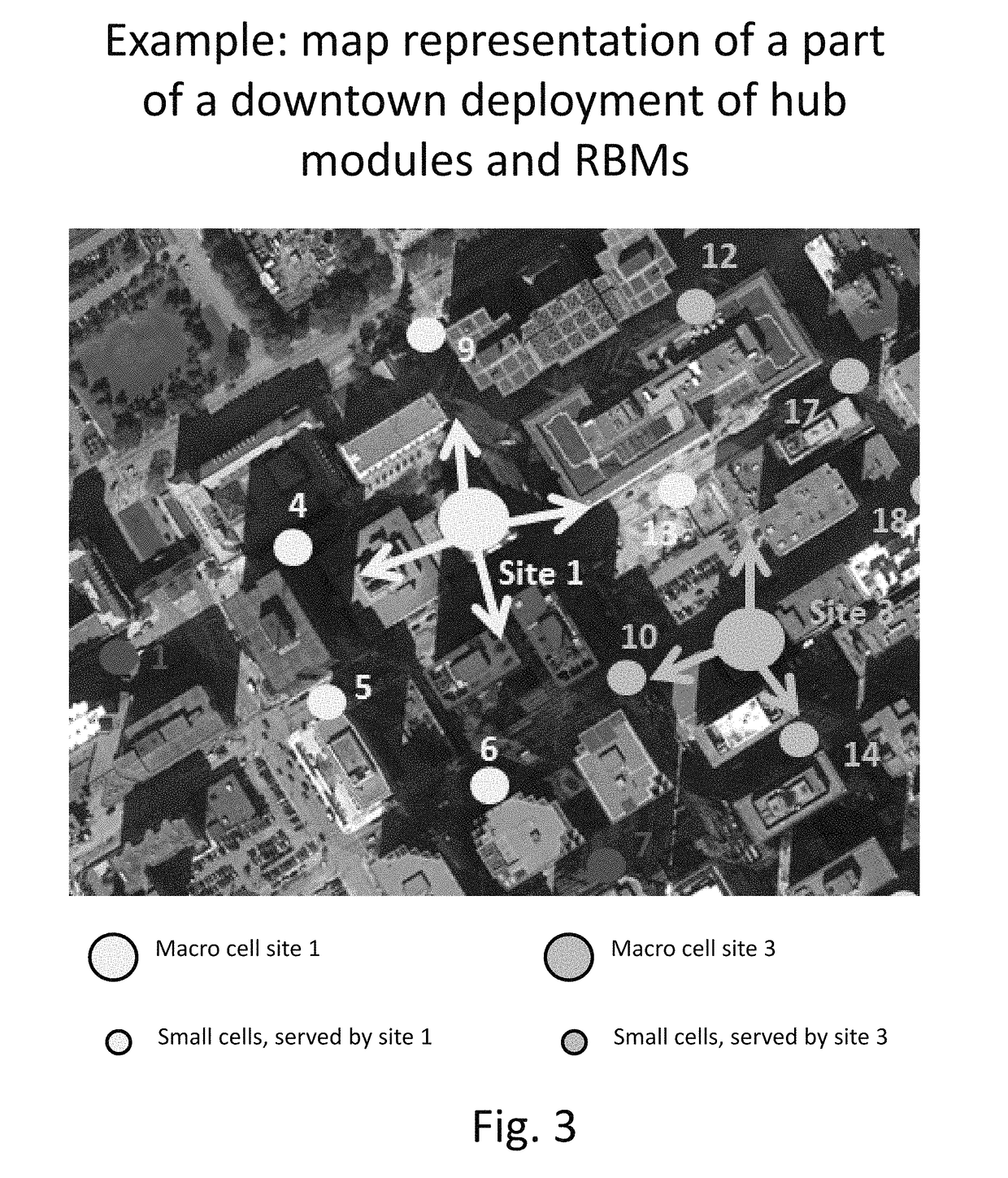Method and system for network planning in fixed wireless backhaul networks
a fixed wireless backhaul and network planning technology, applied in the direction of wireless communication, electrical equipment, network topologies, etc., can solve the problems of not providing real-time performance, requiring significant data inputs, and slowness of commercially available rf planning tools, so as to eliminate or mitigate the disadvantages of known systems and methods
- Summary
- Abstract
- Description
- Claims
- Application Information
AI Technical Summary
Benefits of technology
Problems solved by technology
Method used
Image
Examples
Embodiment Construction
[0075]A system and method for network planning a wireless backhaul network according to an embodiment of the present invention will be described, by way of example, with reference to a NLOS wireless backhaul network 100 as illustrated schematically in FIG. 1, which represents schematically the topology of a system comprising a point-to-point wireless backhaul network, comprising a plurality of fixed nodes. The nodes comprise a plurality of hubs 102 and RBMs 104.
[0076]As an example only, the wireless backhaul network 100 shown in FIG. 1 comprises a plurality of seven sites or cells, each site comprising three hub modules 102, with each hub module serving a sector 120 comprising a cluster of a plurality of Remote Backhaul Modules (RBMs) 104. Thus, there are 21 sectors, each with a hub module 102, serving a cluster of up to four RBMs. As shown, three hubs modules 102, each with directional antenna, are co-located in each of the cell centers, with a cluster of RBMs mapped to each respec...
PUM
 Login to View More
Login to View More Abstract
Description
Claims
Application Information
 Login to View More
Login to View More - R&D
- Intellectual Property
- Life Sciences
- Materials
- Tech Scout
- Unparalleled Data Quality
- Higher Quality Content
- 60% Fewer Hallucinations
Browse by: Latest US Patents, China's latest patents, Technical Efficacy Thesaurus, Application Domain, Technology Topic, Popular Technical Reports.
© 2025 PatSnap. All rights reserved.Legal|Privacy policy|Modern Slavery Act Transparency Statement|Sitemap|About US| Contact US: help@patsnap.com



